A Nonintrusive Load Monitoring Method for Office Buildings Based on Random Forest
Abstract
:1. Introduction
- Most research has mainly concentrated on how to identify the states, types, and energy use of devices in residential buildings. There are limited studies on system-level disaggregation in office buildings, which can provide detailed information on system operation optimization.
- Existing NIM research on commercial buildings has focused on one type of subsystem, while studies on multiple subsystem load disaggregation from building-level energy data are limited. Thus, it is necessary to propose a new NIM method to determine the energy consumption of multiple subsystems (i.e., the four main subsystems).
2. The NIM Approach Based on Random Forest
2.1. Data Collection
2.2. Feature Selection
2.3. Model Construction
2.4. Implementation of the Method
3. Case Study
4. Results and Analysis
4.1. Disaggregation Results Based on Approach I
4.2. Disaggregation Results Based on Approach II
4.3. Disaggregation Results Based on Approach III
4.4. Performance Comparison of the Three Approaches
5. Conclusions
- The proposed NIM method based on RF can achieve subsystem load disaggregation accurately. The RMSEs and MREs of the NIM results are less than 46.4 kW and 12.7%, respectively.
- All four subloads can be disaggregated with high accuracy. For the lighting system, plug-in system, elevator system, and HVAC system loads, the RMSEs (MREs) range from 16.8 kW to 25.0 kW (11.0% to 12.7%), 12.7 kW to 16.8 kW (8.2% to 10.1%), 4.4 kW to 6.4 kW (7.2% to 9.3%), and 28.8 kW to 46.4 kW (7.1% to 12.1%), respectively.
- The three proposed approaches can achieve subsystem load disaggregation accurately. When weather data are obtained, Approach I achieves the most accurate NIM results with RMSEs and MREs of less than 28.8 kW and 11.0%, respectively. When weather data are inaccessible, the NIM method based on Approach II and Approach III is recommended with acceptable accuracy, with RMSEs and MREs of less than 46.4 kW and 12.7%, respectively.
- For periodic loads (loads of the elevator system, plug-in system, and lighting system), the differences in the accuracy of the three approaches are small. For the nonperiodic HVAC system loads, Approach I outperforms Approach II and Approach III.
Author Contributions
Funding
Conflicts of Interest
References
- Fathi, S.; Srinivasan, R.; Fenner, A.; Fathi, S. Machine learning applications in urban building energy performance forecasting: A systematic review. Renew. Sustain. Energy Rev. 2020, 133, 110287. [Google Scholar] [CrossRef]
- Pai, V.; Elzarka, H. Whole building life cycle assessment for buildings: A case study on how to achieve the LEED credit. J. Clean. Prod. 2021, 297, 126501. [Google Scholar] [CrossRef]
- Zou, P.X.; Alam, M. Closing the building energy performance gap through component level analysis and stakeholder collaborations. Energy Build. 2020, 224, 110276. [Google Scholar] [CrossRef]
- Fan, C.; Xiao, F.; Li, Z.; Wang, J. Unsupervised data analytics in mining big building operational data for energy efficiency enhancement: A review. Energy Build. 2018, 159, 296–308. [Google Scholar] [CrossRef]
- Hernández, Á.; Ruano, A.; Ureña, J.; Ruano, M.; Garcia, J. Applications of NILM techniques to energy management and assisted living. IFAC-PapersOnLine 2019, 52, 164–171. [Google Scholar] [CrossRef]
- Gunay, H.B.; Shi, Z.; Wilton, I.; Bursill, J. Disaggregation of commercial building end-uses with automation system data. Energy Build. 2020, 223, 110222. [Google Scholar] [CrossRef]
- Aladesanmi, E.; Folly, K. Overview of non-intrusive load monitoring and identification techniques. IFAC-PapersOnLine 2015, 48, 415–420. [Google Scholar] [CrossRef]
- Hamid, O.; Barbarosou, M.; Papageorgas, P.; Prekas, K.; Salame, C.-T. Automatic recognition of electric loads analyzing the characteristic parameters of the consumed electric power through a non-intrusive monitoring methodology. Energy Procedia 2017, 119, 742–751. [Google Scholar] [CrossRef]
- Shi, X.; Ming, H.; Shakkottai, S.; Xie, L.; Yao, J. Nonintrusive load monitoring in residential households with low-resolution data. Appl. Energy 2019, 252, 113283. [Google Scholar] [CrossRef]
- Bonfigli, R.; Principi, E.; Fagiani, M.; Severini, M.; Squartini, S.; Piazza, F. Non-intrusive load monitoring by using active and reactive power in additive factorial hidden Markov models. Appl. Energy 2017, 208, 1590–1607. [Google Scholar] [CrossRef]
- Batra, N.; Parson, O.; Berges, M.; Singh, A.; Rogers, A. A comparison of non-intrusive load monitoring methods for commercial and residential buildings. arXiv 2014, arXiv:1408.6595. [Google Scholar]
- Hart, G.W. Nonintrusive appliance load monitoring. Proc. IEEE 1992, 80, 1870–1891. [Google Scholar] [CrossRef]
- Zhao, B.; Ye, M.; Stankovic, L.; Stankovic, V. Non-intrusive load disaggregation solutions for very low-rate smart meter data. Appl. Energy 2020, 268, 114949. [Google Scholar] [CrossRef]
- Xia, M.; Liu, W.; Wang, K.; Zhang, X.; Xu, Y. Non-intrusive load disaggregation based on deep dilated residual network. Electr. Power Syst. Res. 2019, 170, 277–285. [Google Scholar] [CrossRef]
- Wang, S.; Chen, H.; Guo, L.; Xu, D. Non-intrusive load identification based on the improved voltage-current trajectory with discrete color encoding background and deep-forest classifier. Energy Build. 2021, 244, 111043. [Google Scholar] [CrossRef]
- Biansoongnern, S.; Plangklang, B. Nonintrusive load monitoring (NILM) using an Artificial neural network in embedded system with low sampling rate. In Proceedings of the 13th International Conference on Electrical Engineering/Electronics, Computer, Telecommunications and Information Technology (ECTI-CON), Chiang Mai, Thailand, 28 June–1 July 2016; pp. 1–4. [Google Scholar]
- Himeur, Y.; Alsalemi, A.; Bensaali, F.; Amira, A. Effective non-intrusive load monitoring of buildings based on a novel multi-descriptor fusion with dimensionality reduction. Appl. Energy 2020, 279, 115872. [Google Scholar] [CrossRef]
- Zhang, Y.; Yang, G.; Ma, S. Non-intrusive load monitoring based on convolutional neural network with differential input. Procedia CIRP 2019, 83, 670–674. [Google Scholar] [CrossRef]
- Welikala, S.; Thelasingha, N.; Akram, M.; Ekanayake, P.B.; Godaliyadda, R.I.; Ekanayake, J.B. Implementation of a robust real-time non-intrusive load monitoring solution. Appl. Energy 2019, 238, 1519–1529. [Google Scholar] [CrossRef]
- Cominola, A.; Giuliani, M.; Piga, D.; Castelletti, A.; Rizzoli, A. A Hybrid signature-based iterative Disaggregation algorithm for non-intrusive load monitoring. Appl. Energy 2017, 185, 331–344. [Google Scholar] [CrossRef]
- Wang, J.; Hou, J.; Chen, J.; Fu, Q.; Huang, G. Data mining approach for improving the optimal control of HVAC systems: An event-driven strategy. J. Build. Eng. 2021, 39, 102246. [Google Scholar] [CrossRef]
- Wagiman, K.R.; Abdullah, M.N.; Hassan, M.Y.; Radzi, N.H.M.; Abu Bakar, A.H.; Kwang, T.C. Lighting system control techniques in commercial buildings: Current trends and future directions. J. Build. Eng. 2020, 31, 101342. [Google Scholar] [CrossRef]
- Norford, L.K.; Leeb, S.B. Non-intrusive electrical load monitoring in commercial buildings based on steady-state and transient load-detection algorithms. Energy Build. 1996, 24, 51–64. [Google Scholar] [CrossRef]
- Wang, Y.; Pandharipande, A.; Fuhrmann, P. Energy data analytics for non-intrusive lighting asset monitoring and energy disaggregation. IEEE Sens. J. 2018, 18, 2934–2943. [Google Scholar] [CrossRef]
- Jazizadeh, F.; Ahmadi-Karvigh, S.; Becerik-Gerber, B.; Soibelman, L. Spatiotemporal lighting load disaggregation using light intensity signal. Energy Build. 2014, 69, 572–583. [Google Scholar] [CrossRef]
- Ying, J.; Peng, X.; Ye, Y. HVAC terminal hourly end-use disaggregation in commercial buildings with Fourier series model. Energy Build. 2015, 97, 33–46. [Google Scholar]
- Doherty, B.; Trenbath, K. Device-level plug load disaggregation in a zero energy office building and opportunities for energy savings. Energy Build. 2019, 204, 109480. [Google Scholar] [CrossRef]
- Wang, Z.; Wang, Y.; Zeng, R.; Srinivasan, R.; Ahrentzen, S. Random Forest based hourly building energy prediction. Energy Build. 2018, 171, 11–25. [Google Scholar] [CrossRef]
- Makariou, D.; Barrieu, P.; Chen, Y. A random forest based approach for predicting spreads in the primary catastrophe bond market. Insur. Math. Econ. 2021. [Google Scholar] [CrossRef]
- Mohana, R.M.; Reddy, C.K.K.; Anisha, P.; Murthy, B.R. Random Forest Algorithms for the Classification of Tree-Based Ensemble; Elsevier: Amsterdam, The Netherlands, 2021. [Google Scholar]
- Zakariazadeh, A. Smart meter data classification using optimized random forest algorithm. ISA Trans. 2021. [Google Scholar] [CrossRef]
- Lahouar, A.; Slama, J.B.H. Day-ahead load forecast using random forest and expert input selection. Energy Convers. Manag. 2015, 103, 1040–1051. [Google Scholar] [CrossRef]
- Doucoure, B.; Agbossou, K.; Cardenas, A. Time series prediction using artificial wavelet neural network and multi-resolution analysis: Application to wind speed data. Renew. Energy 2016, 92, 202–211. [Google Scholar] [CrossRef]
- Curceac, S.; Milne, A.; Atkinson, P.M.; Wu, L.; Harris, P. Elucidating the performance of hybrid models for predicting extreme water flow events through variography and wavelet analyses. J. Hydrol. 2021, 598, 126442. [Google Scholar] [CrossRef]
- Bashir, Z.A.; El-Hawary, M.E. Applying wavelets to short-term load forecasting using PSO-based neural networks. IEEE Trans. Power Syst. 2009, 24, 20–27. [Google Scholar] [CrossRef]
- Sun, Y.; Haghighat, F.; Fung, B.C. A review of the-state-of-the-art in data-driven approaches for building energy prediction. Energy Build. 2020, 221, 110022. [Google Scholar] [CrossRef]
- Farrugia, J.; Griffin, S.; Valdramidis, V.P.; Camilleri, K.; Falzon, O. Principal component analysis of hyperspectral data for early detection of mould in cheeselets. Curr. Res. Food Sci. 2021, 4, 18–27. [Google Scholar] [CrossRef]
- Pedregosa, F.; Varoquaux, G.; Gramfort, A.; Michel, V.; Thirion, B.; Grisel, O.; Blondel, M.; Müller, A.; Nothman, J.; Louppe, G. Scikit-learn: Machine Learning in Python. J. Mach. Learn. Res. 2012, 12, 2825–2830. [Google Scholar]
- Rao, C.; Liu, M.; Goh, M.; Wen, J. 2-stage modified random forest model for credit risk assessment of P2P network lending to “Three Rurals” borrowers. Appl. Soft Comput. 2020, 95, 106570. [Google Scholar] [CrossRef]
- Nadi, A.; Moradi, H. Increasing the views and reducing the depth in random forest. Expert Syst. Appl. 2019, 138, 112801. [Google Scholar] [CrossRef]
- Qu, Z.; Xu, J.; Wang, Z.; Chi, R.; Liu, H. Prediction of electricity generation from a combined cycle power plant based on a stacking ensemble and its hyperparameter optimization with a grid-search method. Energy 2021, 227, 120309. [Google Scholar] [CrossRef]
- MOHURD. Design Standard for Energy Efficiency of Public Buildings GB50189; Ministry of Housing and Urban-Rural Development of the China: Beijing, China, 2015.
- Canada Institute. Practical Heating and Air Conditioning Design Manual, 2nd ed.; Canada Institute: Washington, DC, USA, 2010. [Google Scholar]
- Zhao, J.; Lasternas, B.; Lam, K.P.; Yun, R.; Loftness, V. Occupant behavior and schedule modeling for building energy simulation through office appliance power consumption data mining. Energy Build. 2014, 82, 341–355. [Google Scholar] [CrossRef]
- Wu, W.; Li, X.; You, T.; Wang, B.; Shi, W. Hybrid ground source absorption heat pump in cold regions: Thermal balance keeping and borehole number reduction. Appl. Therm. Eng. 2015, 90, 322–334. [Google Scholar] [CrossRef]
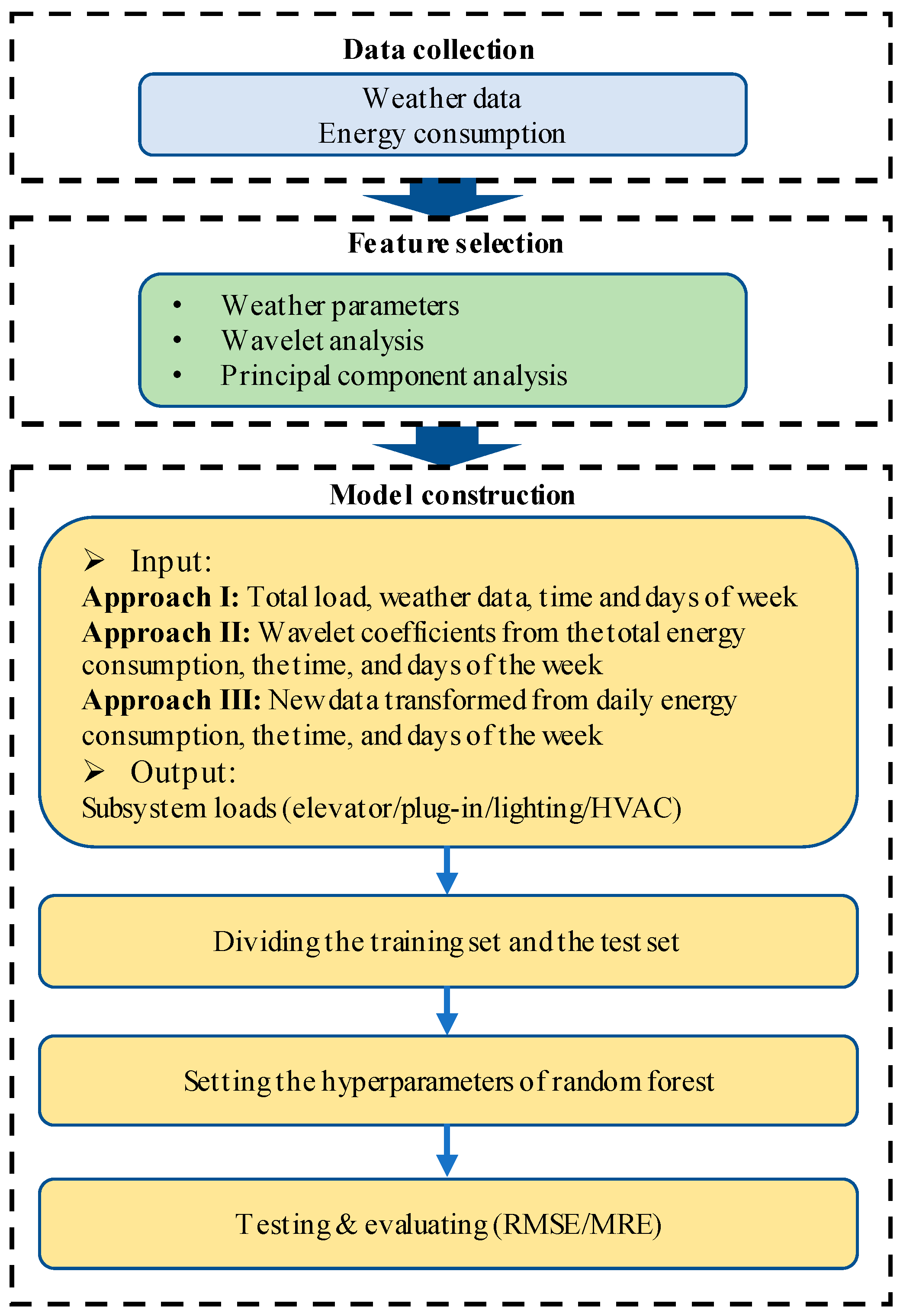
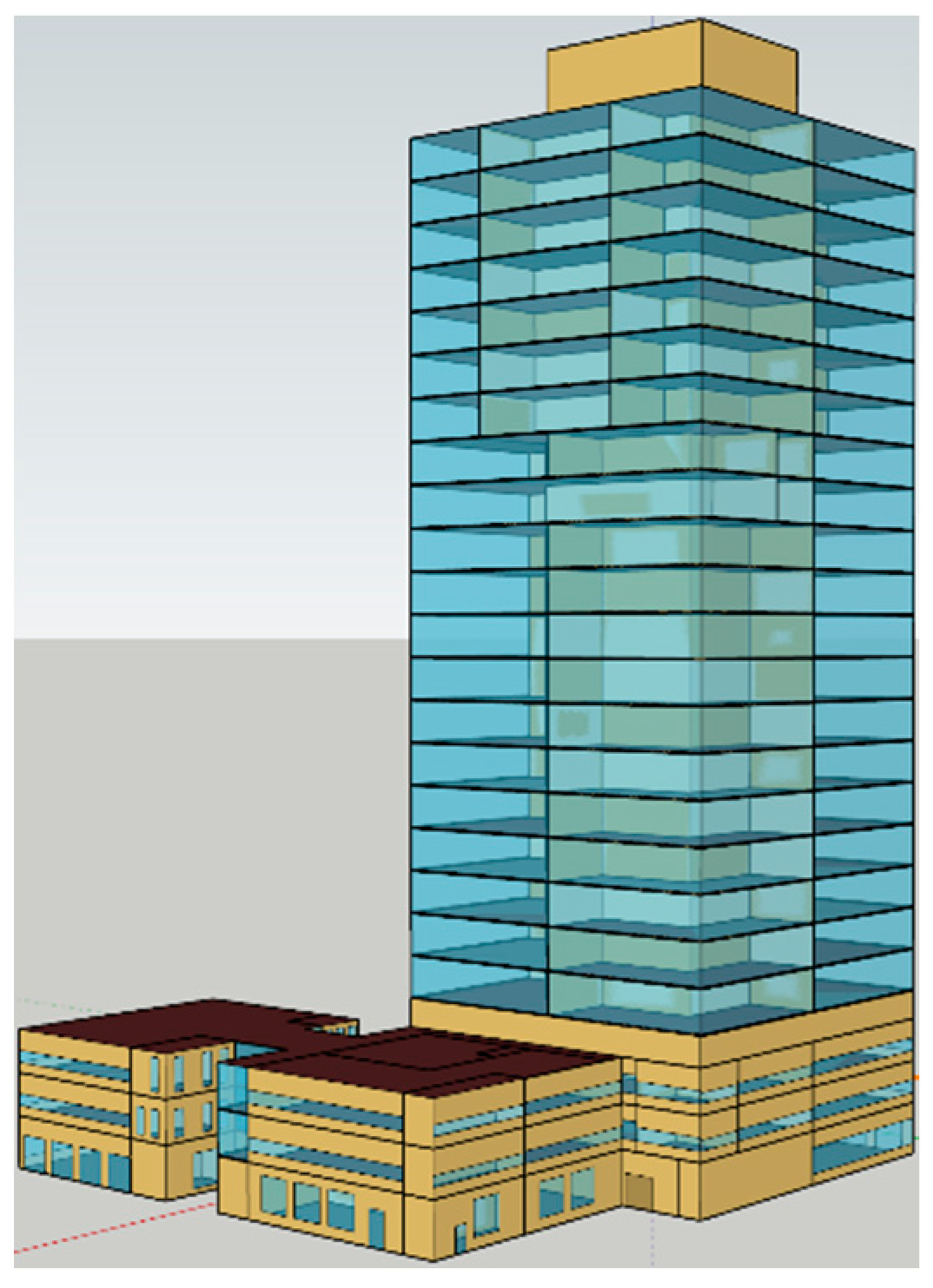
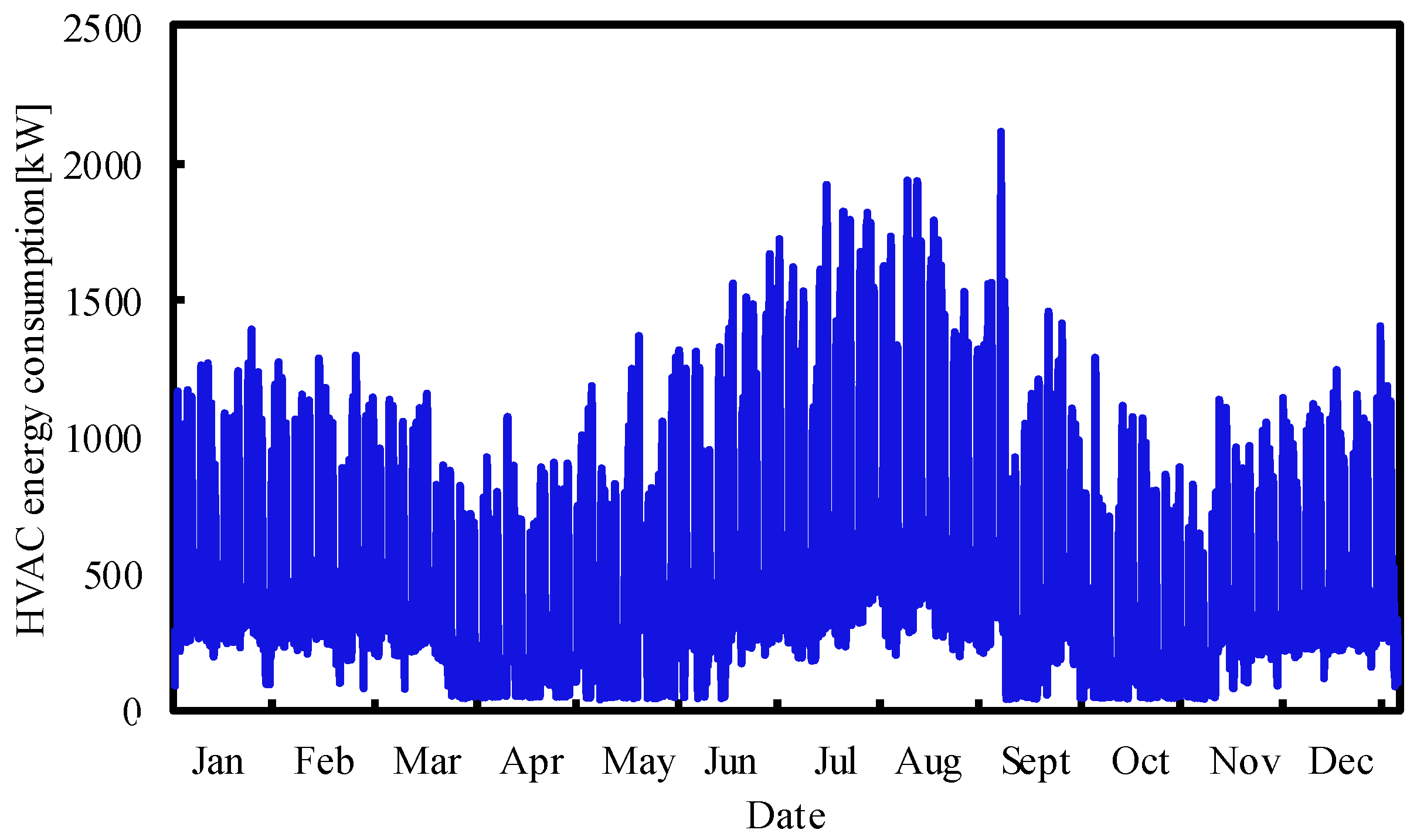

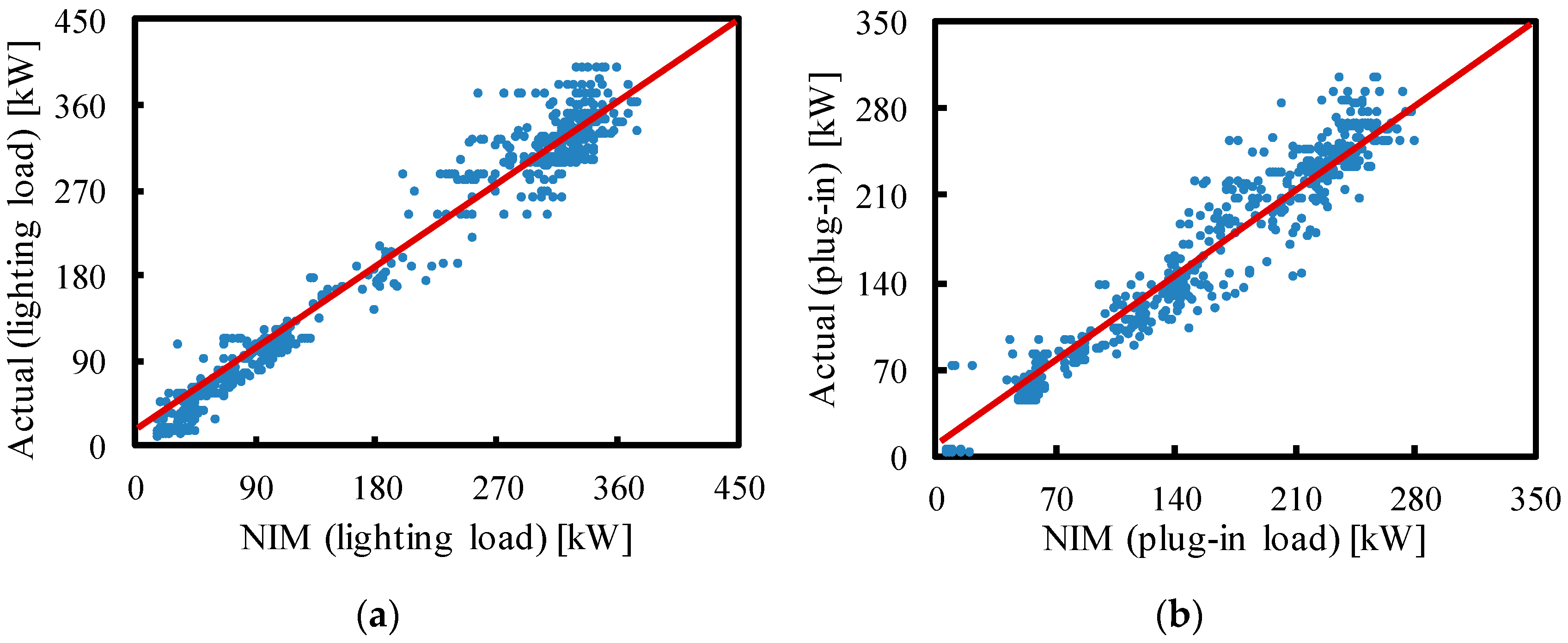
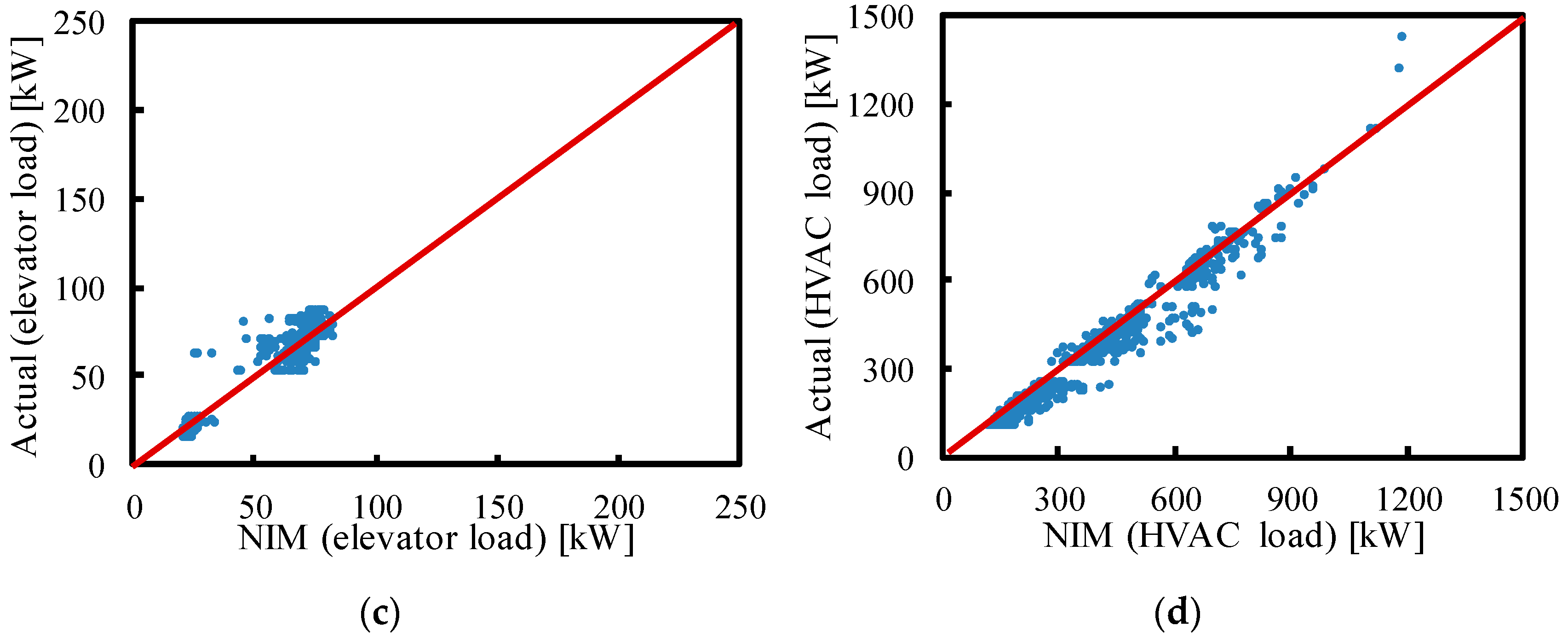
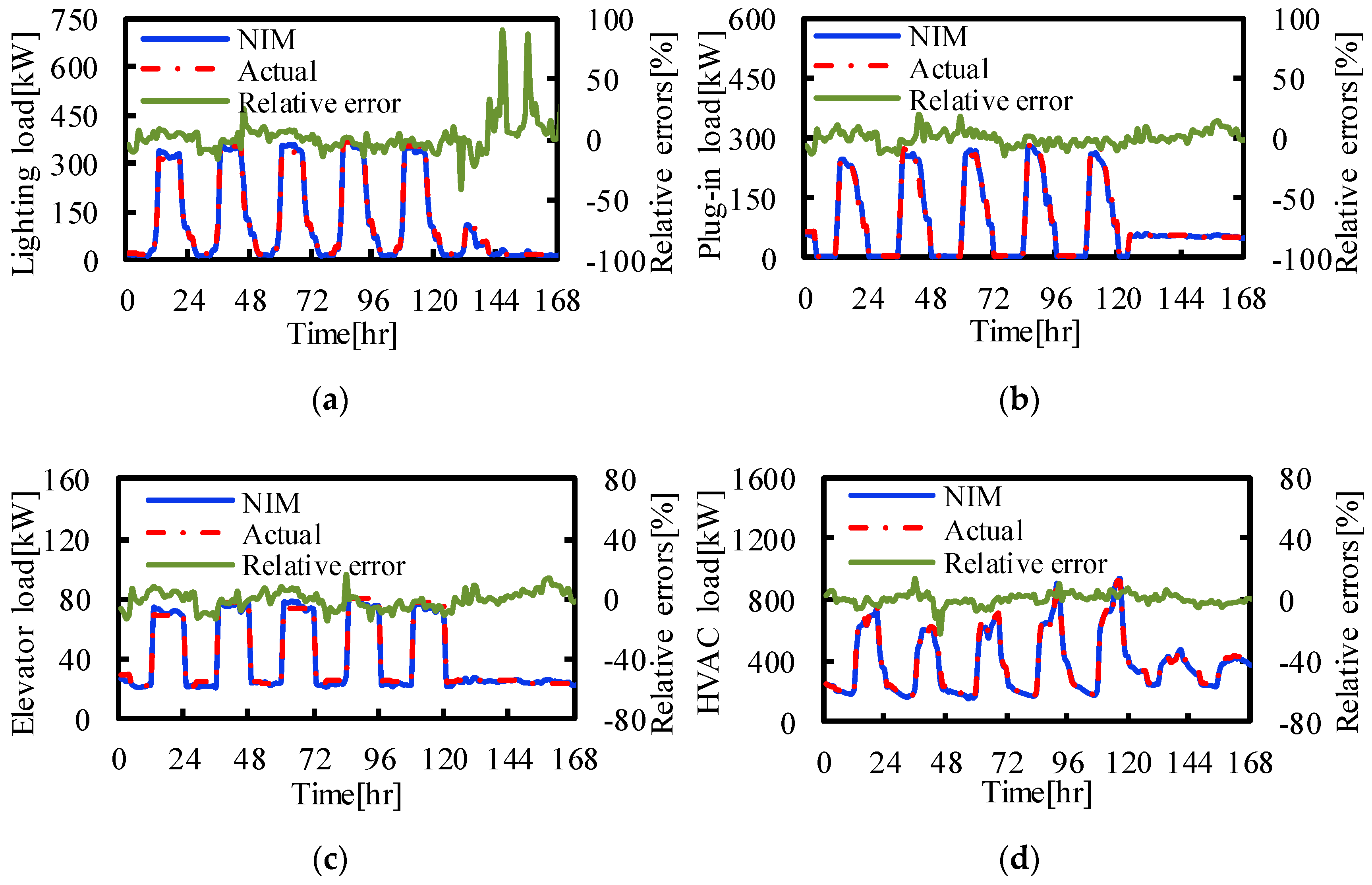
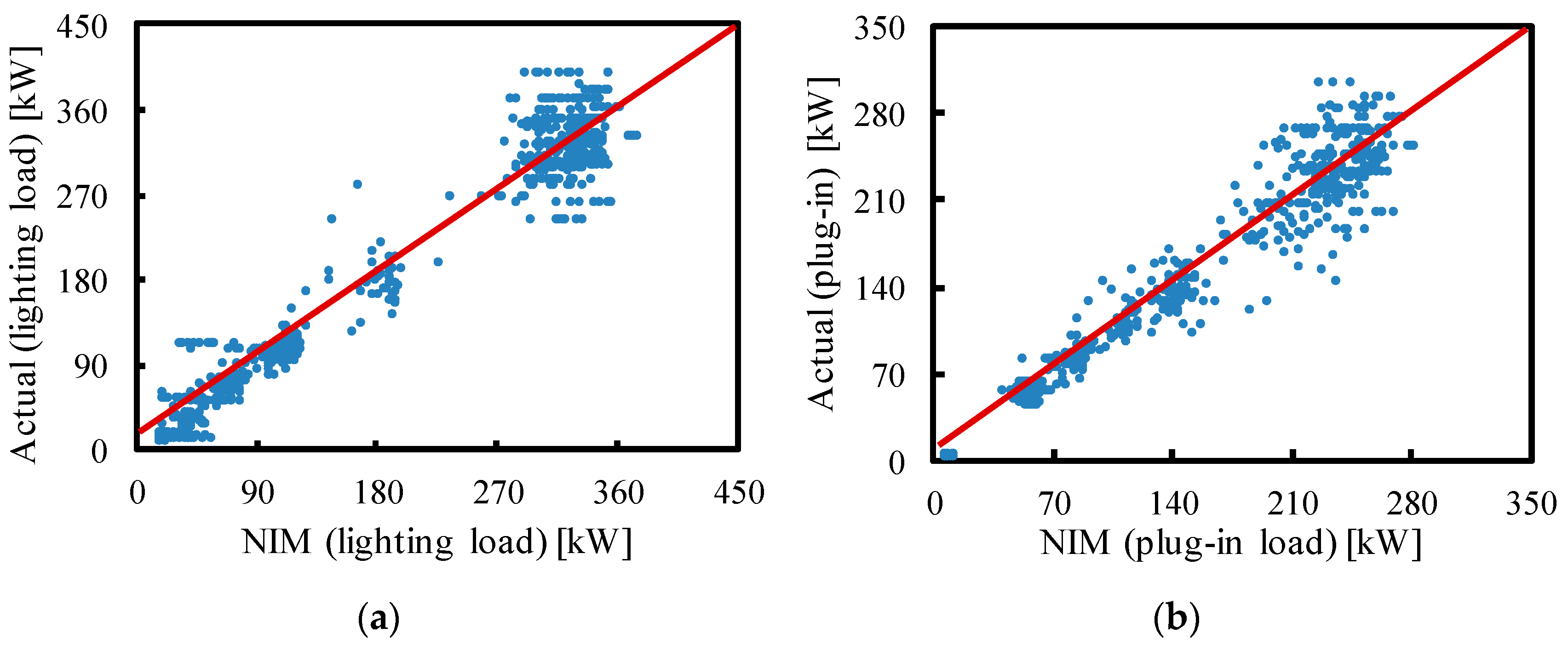
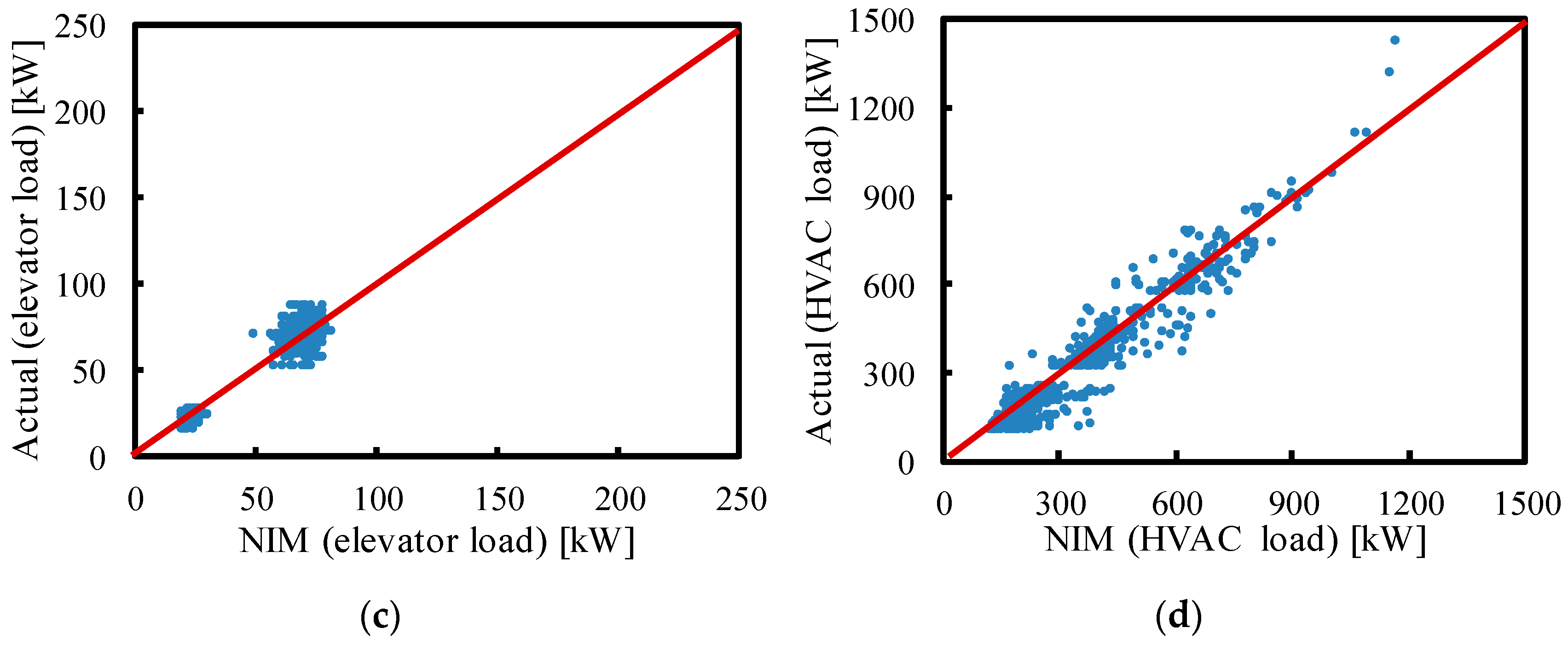
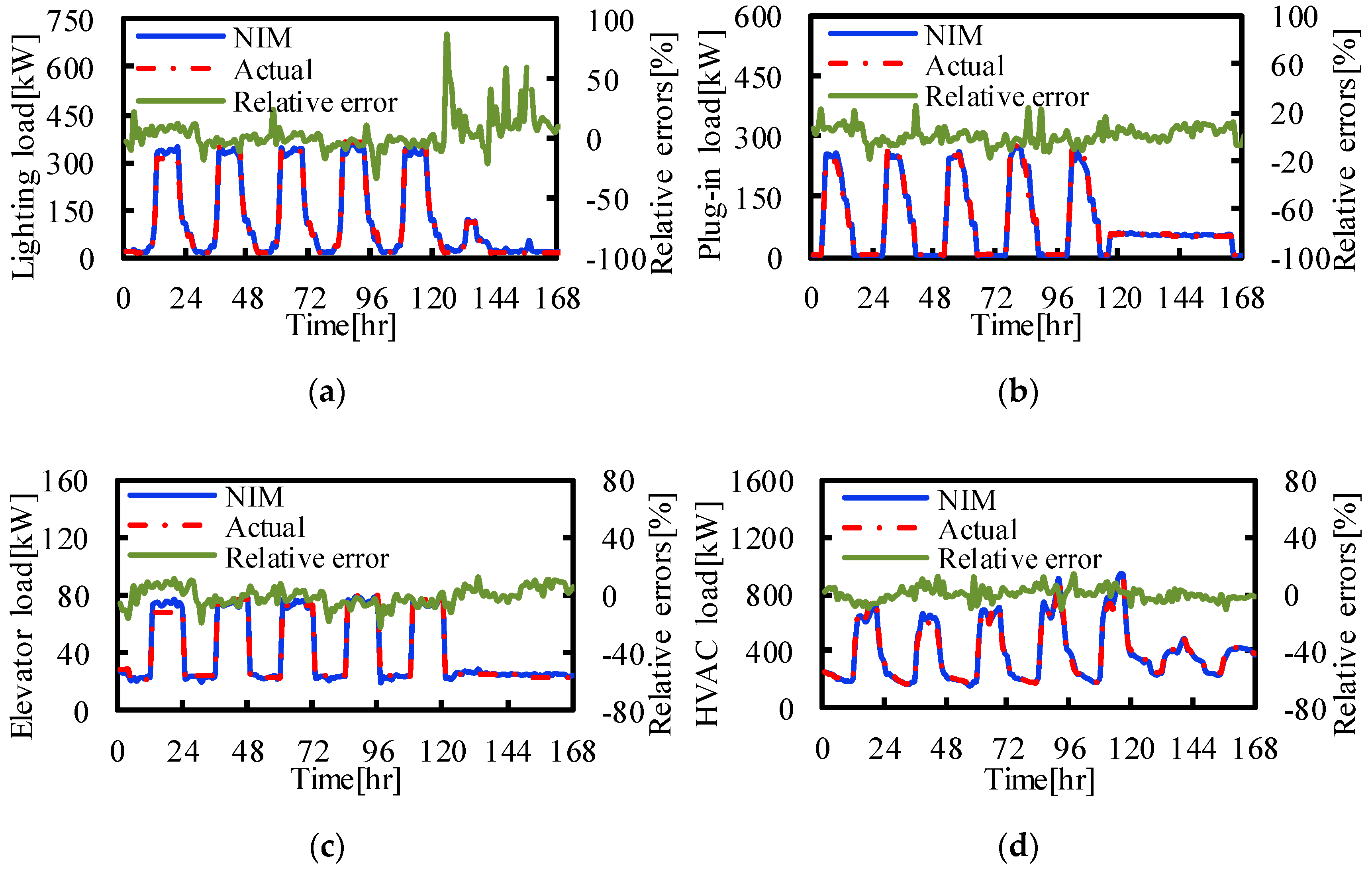
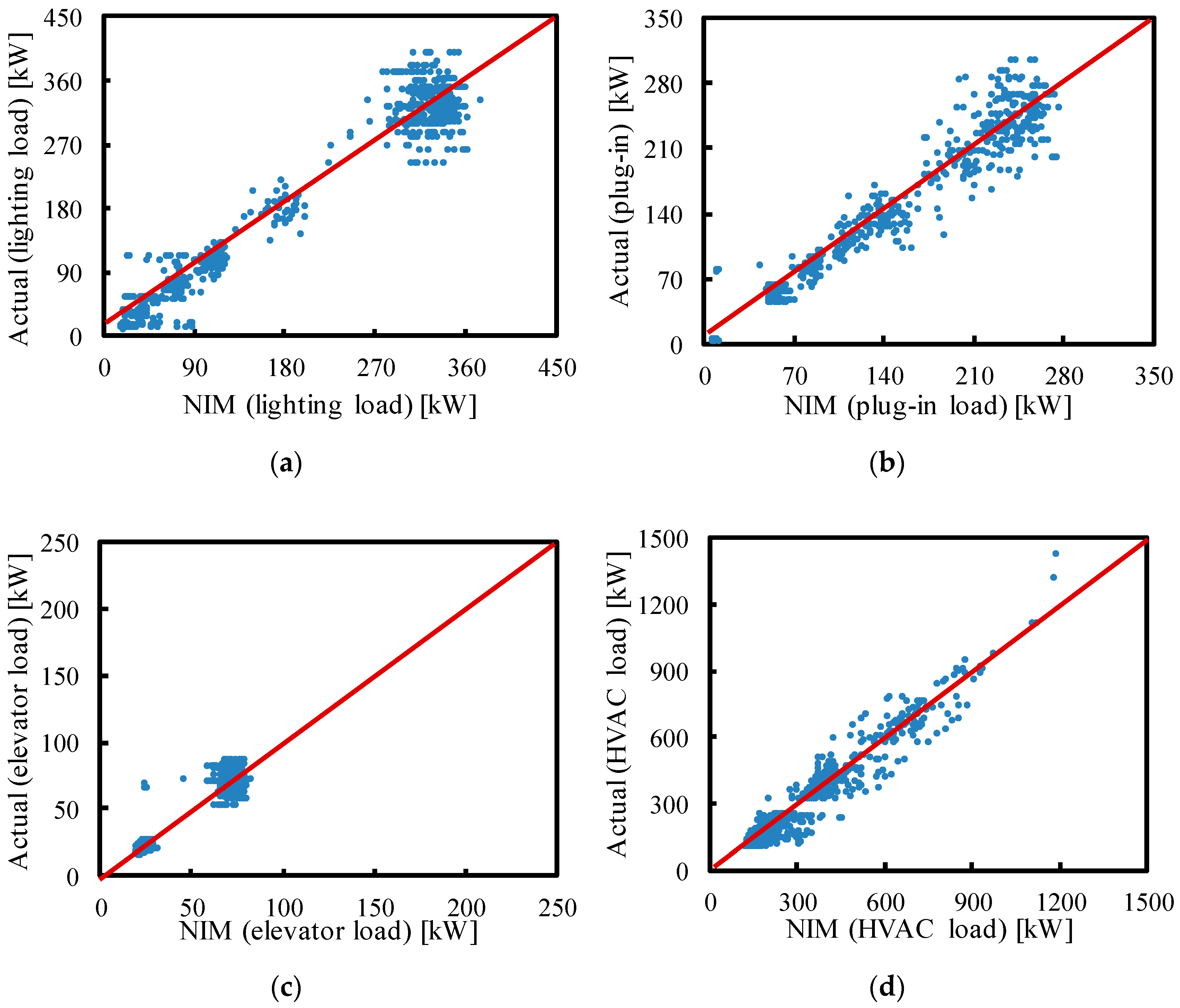
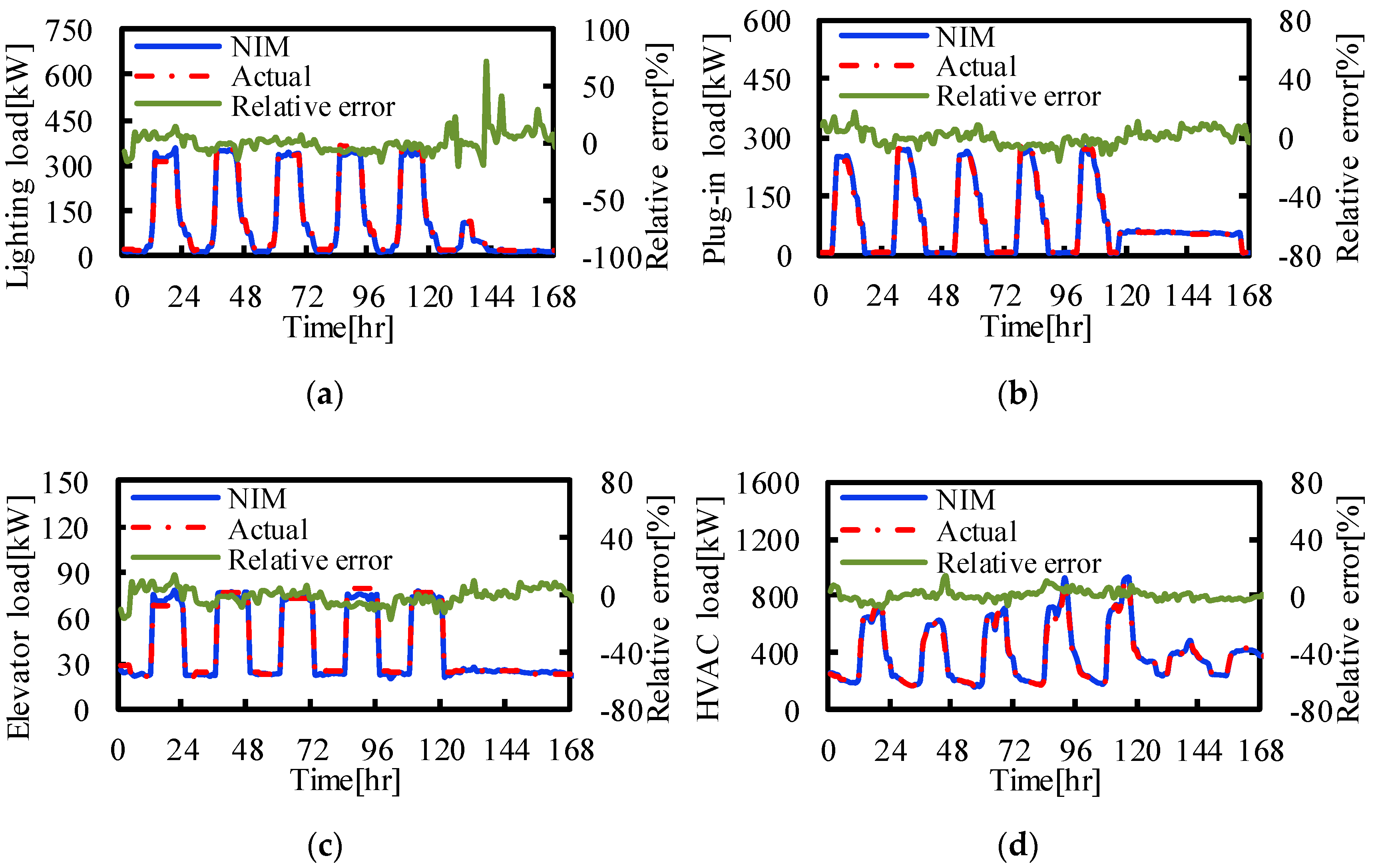
| Building Envelope | |||
|---|---|---|---|
| Item | Model Thermal Property (W/m2 K) | Reference | |
| Interior floor | 1.5 | [42] | |
| Interior wall | 0.16 | ||
| Interior ceiling | 1.5 | ||
| Exterior door | 1.2 | ||
| Exterior floor | 0.23 | ||
| Exterior window | 2.3 | ||
| Exterior wall | 0.45 | ||
| Internal heat gain | |||
| Item | Design density | Schedule | Reference |
| Occupant | Office: 8 m2/person Hall: 20 m2/person | Weekdays: 1:00–600: 0% 7:00: 10% 8:00: 20% 9:00–12:00: 95% 13:00: 50% 14:00–17:00: 95% 18:00: 30% 19:00–22:00: 10% 23:00–00:00: 5% Weekends: 1:00–6:00: 0% 7:00–18:00: 5% 19:00–00:00: 0% | [42,43,44] |
| Lighting | Office: 18 W/m2 Hall: 11 W/m2 | Weekdays: 0:00–5:00: 5% 6:00–7:00: 10% 8:00: 30% 9:00–17:00: 90% 18:00: 50% 19:00–20:00: 30% 21:00–22:00: 20% 23:00: 10% Weekends: 0:00–23:00: 5% | |
| Plug-in devices | Office: 13 W/m2 Hall: 5 W/m2 | Weekdays: 0:00–8:00: 2% 9:00: 40% 10:00–14:00: 90% 15:00: 80% 16:00: 70% 17:00–18:00: 50% 19:00–20:00: 30% 21:00–23:00: 2% Weekends: 0:00–23:00: 20% | |
| Elevator | 30 W/m2 | Weekdays: 0:00–8:00: 32% 9:00–20:00: 100% 21:00–23:00: 32% Weekends: 0:00–23:00: 34% | |
| Hyperparameters | Setting | ||
|---|---|---|---|
| Approach I | Approach II | Approach III | |
| The number of estimators | 152 | 143 | 181 |
| The maximum depth of individual trees | 13 | 18 | 21 |
| The number of features | auto | ||
| The minimum samples for a split | 2 | ||
| The minimum sample leaf | 1 | ||
| Item | Training Results | Testing Results | ||
|---|---|---|---|---|
| RMSE (kW) | MRE (%) | RMSE (kW) | MRE (%) | |
| Lighting | 4.4 | 3.4 | 16.8 | 11.0 |
| Plug-in | 4.0 | 3.0 | 12.7 | 8.2 |
| Elevator | 1.3 | 2.3 | 4.4 | 7.2 |
| HVAC | 7.8 | 1.3 | 28.8 | 7.1 |
| Item | Training Results | Testing Results | ||
|---|---|---|---|---|
| RMSE (kW) | MRE (%) | RMSE (kW) | MRE (%) | |
| Lighting | 7.1 | 5.0 | 24.0 | 12.7 |
| Plug-in | 4.9 | 4.0 | 16.5 | 10.1 |
| Elevator | 1.8 | 3.1 | 5.5 | 8.8 |
| HVAC | 13.5 | 2.3 | 46.2 | 12.1 |
| Item | Training Results | Testing Results | ||
|---|---|---|---|---|
| RMSE (kW) | MRE (%) | RMSE (kW) | MRE (%) | |
| Lighting | 5.5 | 3.6 | 25.0 | 11.9 |
| Plug-in | 3.8 | 2.7 | 16.8 | 9.8 |
| Elevator | 1.4 | 2.3 | 6.4 | 9.3 |
| HVAC | 10.3 | 1.7 | 46.4 | 11.4 |
| Item | Difference of MRE between Approach I and Approach II (%) | Difference of MRE between Approach I and Approach III (%) |
|---|---|---|
| Lighting | −1.7 | −0.9 |
| Plug-in | −1.9 | −1.6 |
| Elevator | −1.6 | −2.1 |
| HVAC | −5 | −4.3 |
Publisher’s Note: MDPI stays neutral with regard to jurisdictional claims in published maps and institutional affiliations. |
© 2021 by the authors. Licensee MDPI, Basel, Switzerland. This article is an open access article distributed under the terms and conditions of the Creative Commons Attribution (CC BY) license (https://creativecommons.org/licenses/by/4.0/).
Share and Cite
Ling, Z.; Tao, Q.; Zheng, J.; Xiong, P.; Liu, M.; Xiao, Z.; Gang, W. A Nonintrusive Load Monitoring Method for Office Buildings Based on Random Forest. Buildings 2021, 11, 449. https://doi.org/10.3390/buildings11100449
Ling Z, Tao Q, Zheng J, Xiong P, Liu M, Xiao Z, Gang W. A Nonintrusive Load Monitoring Method for Office Buildings Based on Random Forest. Buildings. 2021; 11(10):449. https://doi.org/10.3390/buildings11100449
Chicago/Turabian StyleLing, Zaixun, Qian Tao, Jingwen Zheng, Ping Xiong, Manjia Liu, Ziwei Xiao, and Wenjie Gang. 2021. "A Nonintrusive Load Monitoring Method for Office Buildings Based on Random Forest" Buildings 11, no. 10: 449. https://doi.org/10.3390/buildings11100449
APA StyleLing, Z., Tao, Q., Zheng, J., Xiong, P., Liu, M., Xiao, Z., & Gang, W. (2021). A Nonintrusive Load Monitoring Method for Office Buildings Based on Random Forest. Buildings, 11(10), 449. https://doi.org/10.3390/buildings11100449





